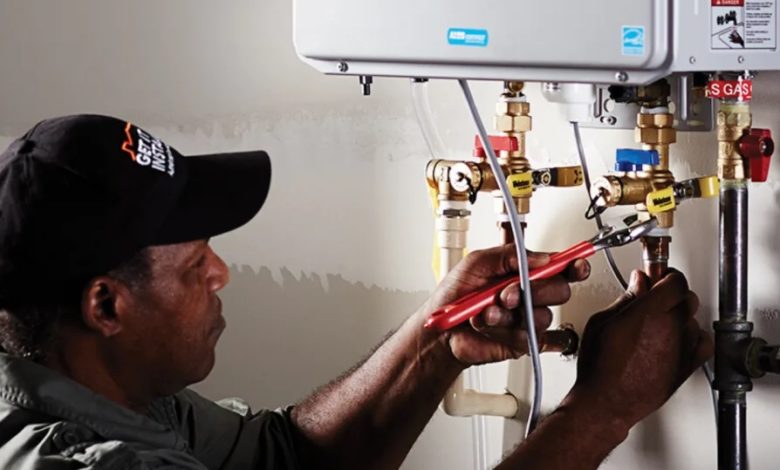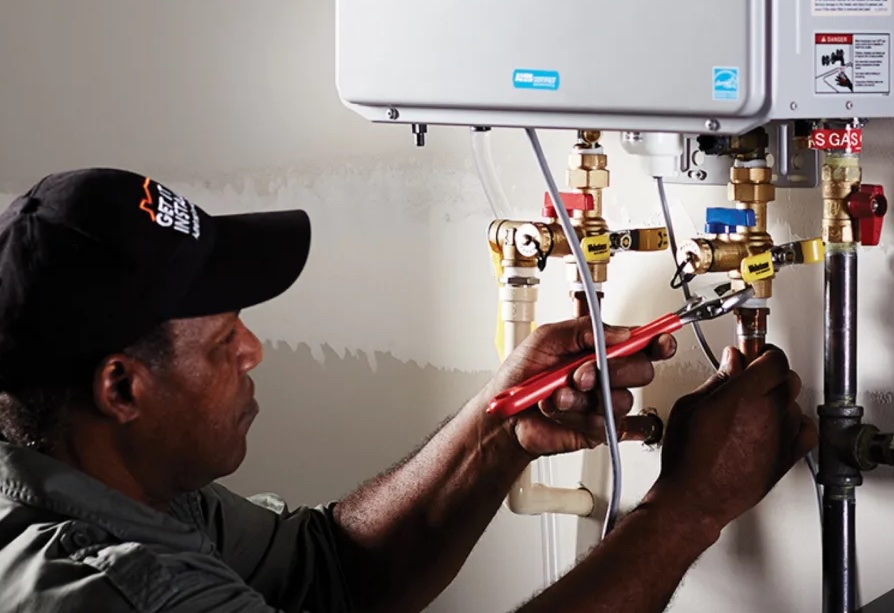What is the Downside of a Tankless Water Heater?

Tankless water heaters are increasingly becoming popular by the day. Unlike traditional models that require a tank to store water, these units do not need a tank, thus space-saving.
According to U.S. Department of Energy, These heaters are highly efficient, eco-friendly, have a more extended life space than those with tanks, and will help you save money.
However, with all these advantages, the heaters have a number of disadvantages that you need to consider before investing in one.
So, what is the downside of a tankless water heater? We have compiled the list of all the drawbacks of a tankless unit to help you decide when you still want it for your home. Continue reading to learn more.
Disadvantages of a Tankless Water Heater
Although a tankless water heater can offer you lots of benefits, it has a few disadvantages that you need to be aware of. We’ve listed them here for you.
-
High Upfront Cost
One of the major downsides of a tankless water heater is the high upfront cost. The average cost of the unit is usually slightly higher for natural or propane gas models (around $1,000 to $1,500) than electric units ($500 to $1,500).
Couple this with the installation costs, and you’ll have to part with up to $3000 on average.
Tankless systems are usually expensive because of high installation costs. The installation process is complex, and you’ll have to get a professional plumber to install the unit.
Expect to pay the plumber around $50 to $150 per hour, depending on the complexity of the setup.
Additionally, you might also be forced to install a water softening system if living in an area with hard water. Installing the unit adds to the overall cost.
-
Inconsistent Temperature
A tankless water heater provides hot water but only if you are using one appliance. Should you use several appliances at a go, the water heater might not keep up.
This is a significant downside, especially for persons with bigger families. Imagine you want to take a shower while your partner wants to use the dishwasher, quite an inconvenience, right?
That’s why you need to consider the flow rate of a tankless water heater before paying for it. The flow rate, in simple terms, is the amount of water the unit can heat at a given time.
The higher the flow rate, the better.
Also, since tankless water heaters come in different sizes, get one that is big enough to meet the hot water needs of your household.
Avoid running too many appliances at the same time and exceeding the flow rate of your unit. You don’t want to step into the shower, and all you can get is cold water, right?
-
Takes Longer to Deliver Hot Water
Tankless water heaters take longer to generate hot water than tank-style models. Remember, tankless units don’t store hot water ready to flow instantly when you need it.
When you turn on your hot water tap, the water in the pipes is at room temperature or cool. It takes between a few seconds and minutes for heated water to come through.
Tank-style models don’t produce hot water instantly as well, but since they have water in storage ready to go, it reaches the tap faster.
-
Cold Water Sandwich
A cold water sandwich occurs when a sporadic use of hot water makes you feel an initial surge of hot water. The hot water is quickly followed by cold water, which turns hot again.
This is precisely what happens…
When you turn your hot water tap off and on quickly (like when hand-washing dishes), the pipes usually have hot water in them from seconds ago.
The short delay between when your water starts to flow and when the heater kicks on causes short bursts of cold water before it turns hot.
Although the cold water sandwich is not a major issue, it can throw you off if you aren’t used to it.
-
Not Easy to Get Lukewarm Water
With tankless water heaters, getting lukewarm water isn’t easy at all. Since these models require a minimum amount of water flow before activating, a gap exists between crispy cold water and the warm water you can get with a hot and cold water mix.
-
No Hot Water in Case of Power Outage
Tankless water heaters are powered by electricity or gas. In fact, even gas-powered units rely on an electric control panel to operate.
Therefore, regardless of the model, you’ll run out of hot water in case of a power outage.
Conclusion
When looking at installing a tankless water heater, don’t dwell on the benefits it brings along only. Consider the disadvantages too.
Don’t make a rash decision. It’s only after going through the pros and cons of these units that you can make an informed buying decision.






